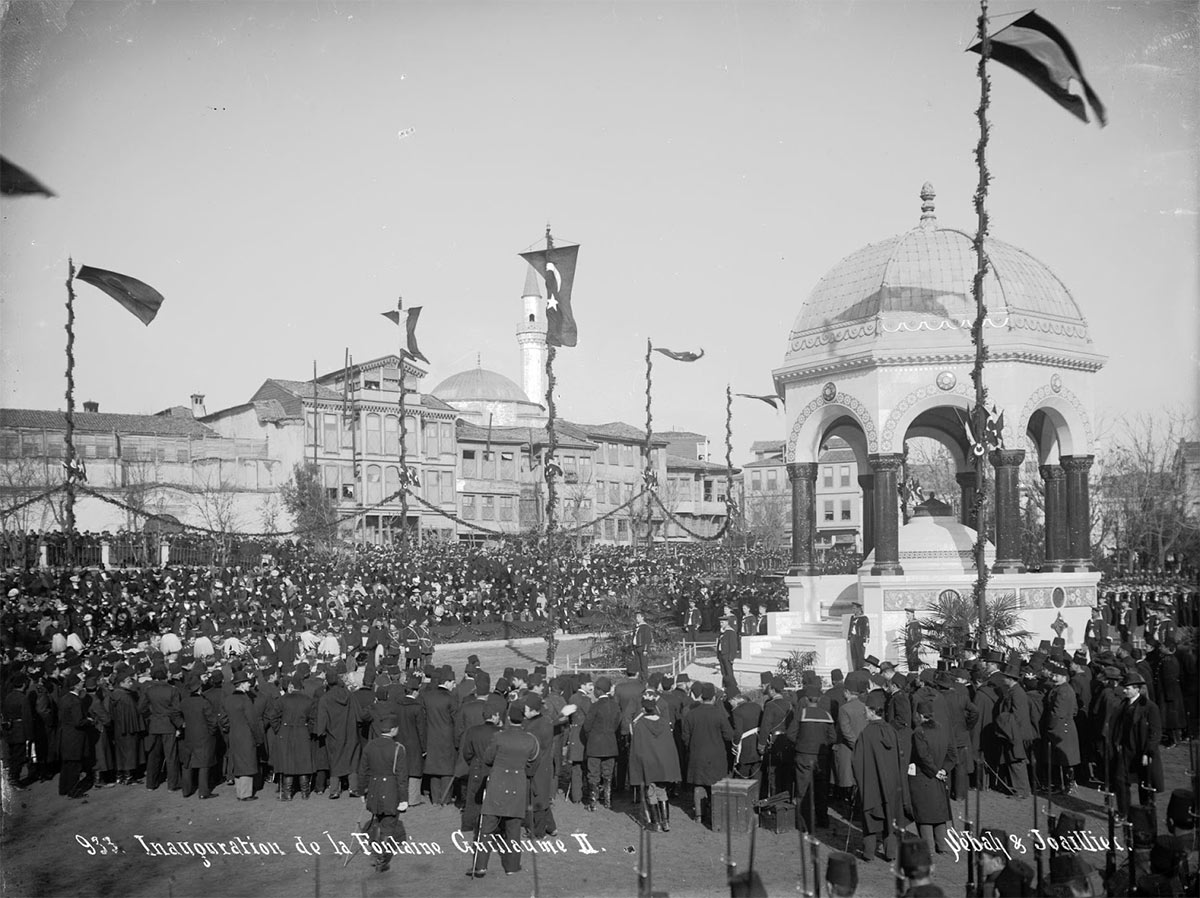The Story of the German Fountain
The German Fountain, a historic and architecturally significant monument located in Istanbul, Turkey, tells a story of diplomacy, friendship, and artistry bridging two nations. This landmark, situated in the ancient Hippodrome square, now known as Sultanahmet Square, stands as a symbol of the close relationship between the German and Ottoman Empires in the early 20th century. In this detailed exploration, we will delve into the origins, design, cultural significance, and enduring legacy of the German Fountain, a structure that not only enhances the historic fabric of Istanbul but also embodies a fascinating period in global diplomacy.
Historical Background
1. Ottoman-German Relations
- The German Fountain was a gift from German Emperor Wilhelm II to Sultan Abdulhamid II of the Ottoman Empire. This gesture was part of Wilhelm II’s diplomatic visit to Istanbul in 1898, aimed at strengthening the alliance between Germany and the Ottoman Empire.
2. Construction and Inauguration
- The fountain was constructed in Germany and transported to Istanbul. It was officially inaugurated on January 27, 1901, marking the German Emperor’s second visit to the city.

Architectural Features
1. Design and Craftsmanship
- The fountain’s design is a beautiful amalgamation of neo-Byzantine and neo-Ottoman architectural styles. It was designed by the German architect Carlitzik, and its construction was carried out by the renowned firm of Schoele & Mayr.
2. Structure and Embellishments
- The octagonal dome of the fountain is adorned with gold mosaics, a distinctive feature of Byzantine influence. The dome rests on eight monolithic marble columns. The fountain’s bronze, green, and gold color scheme complements the intricate craftsmanship.
3. Inscriptions and Symbolism
- The fountain bears inscriptions in both German and Ottoman Turkish, commemorating the relationship between the two empires. The inscriptions and the imperial crests symbolize a fusion of cultural and political ties.
Cultural and Historical Significance
1. Diplomatic Symbolism
- The German Fountain is not merely an architectural landmark; it symbolizes a pivotal era in Turkish-German relations, at a time when alliances were crucial to the geopolitical landscape of Europe and the Middle East.
2. A Testament to Artistic Collaboration
- This monument represents a unique collaboration between German and Ottoman artists and architects, blending different artistic traditions and techniques.
The German Fountain Today
1. A Tourist Attraction
- Today, the German Fountain is a popular attraction for visitors in Istanbul. It stands amidst other historical landmarks in Sultanahmet Square, including the Hagia Sophia and the Blue Mosque.
2. Preservation and Restoration
- Over the years, the fountain has undergone several restoration efforts to preserve its structural integrity and artistic detail, ensuring its survival as a historical treasure for future generations.
Visitor Experience
1. Accessibility and Best Times to Visit
- The German Fountain is easily accessible to tourists exploring the Sultanahmet area. The square is a hub for Istanbul’s rich cultural heritage, making it a must-visit location for anyone interested in history and architecture.
2. Photography and Interpretation
- The fountain is a favorite spot for photography enthusiasts, offering a picturesque backdrop. Informational plaques nearby provide visitors with historical context.
The German Fountain stands as a poignant reminder of the rich historical tapestry of Istanbul, a city where East meets West, and where diverse cultural influences converge. It’s more than just a fountain; it’s a symbol of diplomatic history, a piece of art, and an architectural gem. For visitors to Istanbul, the German Fountain offers not only a glimpse into the city’s diverse past but also a moment of reflection on the enduring power of cultural and political alliances. It remains a testament to the time when art and diplomacy walked hand in hand, leaving behind a legacy that continues to enchant and educate.
